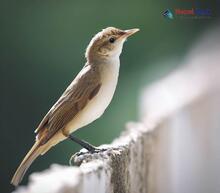Tucked away among the majestic Himalayan peaks, Nepal is a haven for all things wild and beautiful. Among its diverse wildlife, one species that has captured our attention is the Acrocephalinae subfamily of birds. These tiny insect-eaters are famous for their melodious tunes and unrivaled nest-making abilities. Join us as we explore the captivating evolutionary relationships within this subfamily and learn what sets them apart from other birds in Nepal.
Getting to Know Acrocephalinae
Acrocephalinae birds are part of the Sylviidae family, which includes various species across Europe, Asia, and Africa. They're also known as marsh or reed warblers because they love living near wetlands.
These little creatures stand out thanks to their slender bodies, long beaks, and rounded heads. They mainly eat insects and other small critters, using their sharp hearing to detect prey hiding in thick plants. Acrocephalinae birds don't just look interesting—they're also known for their intricate melodies, which play a vital role in their fascinating courtship dances.
Piecing Together Evolutionary Connections
Unraveling the links between different Acrocephalinae species lets us uncover secrets about how these birds have evolved and adapted over time. With recent progress in molecular biology, DNA sequencing has opened up new opportunities for understanding these connections more accurately.
By analyzing DNA from various Acrocephalinae species in Nepal, scientists can identify genetic similarities and differences among them. This data helps create phylogenetic trees - branching diagrams displaying the evolutionary ties between different species. These trees offer a glimpse into how these captivating creatures have evolved from a shared ancestor millions of years ago.
Adapting and Thriving in Nepal's Bird Paradise
Nepal's rich and varied environments—ranging from lush rainforests to temperate woodlands and high-altitude alpine habitats—provide countless opportunities for birds to adapt. The Acrocephalinae subfamily is no exception—they've developed amazing ways to excel in these diverse settings.
Their long, pointed beaks come in handy for catching insects tucked away in the marshy grasses, while their muted colors allow them to blend in with their surroundings and elude predators.
Moreover, the different song patterns unique to each Acrocephalinae species play a critical role in keeping reproduction within their own kind. This separation helps avoid interbreeding between closely related species and encourages genetic diversity and evolution within the subfamily.
In summary, examining the evolutionary bonds among Acrocephalinae birds living in Nepal not only reveals their incredible adaptations but also enhances our appreciation of bird diversity on a wider scale. By deepening our understanding of these enchanting creatures, we can both cherish and protect Nepal's natural wonders for future generations to enjoy.





